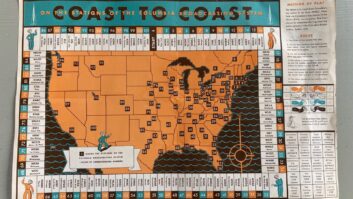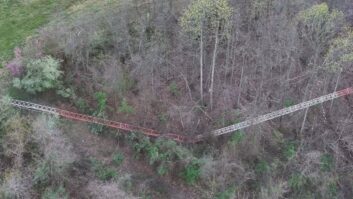
The author is technical editor of Radio World Engineering Extra.
Legislation to permit an increase in low-power FM services was signed by President Obama in January. The law instructs the FCC to eliminate third-adjacent-channel protections and allow waivers of second-adjacent protections under certain conditions.
To achieve a second-adjacent waiver, an LPFM proponent would be allowed for the first time to use propagation models that take terrain into account, for example in a situation where a mountain ridge would limit the field strength of an LPFM in a specific direction. These changes are predicted to make available a significant number of new channels for LPFM.
In return for its consent, the National Association of Broadcasters received some additional specific protections for full-service stations, including a confirmation that first- and second-adjacent protections would remain, with the exception noted above. In densely populated areas a full-service station could shut down an LPFM if the latter causes interference, even in some cases beyond its protected contour. Finally, the bill preserved third-adjacent protections for stations that use analog subcarriers to provide radio reading services.
These events have led to speculation that we could see a second LPFM window with a large wave of applications from community groups. Given the determination and grit with which proponents have pursued their goal, I suspect thousands might file.
Low-power roots
I have a lot of respect for the idea of community radio. My own career in broadcasting began at a noncommercial educational station, and I know a fair number of people in the industry who had a similar start. At their best, noncom educational stations speak to their communities with local programming and often are operated directly by community members. What’s not to like?
A low-power station gives a community organization a mass media outlet that would otherwise be hard to acquire. The flexibility of radio allows groups with relatively few resources to operate in a widely available medium, unlike more expensive types such as television and newspapers.
Those of us who have been around long enough will recall the many Class D noncom stations at high schools and colleges. When the Class D license was eliminated, most improved their facilities and migrated to the NCE band; not all survived. LPFM revives the idea of limited coverage with reduced responsibilities.
Low-power stations potentially offer a way to rejuvenate broadcasting by bringing into the field a new array of potential owners and new ideas on how to make radio. They also provide a potential pool for full-service licensees to call on as current radio talent matures and retires.
The immense interest in this band also demonstrates the validity of radio as a broadcast medium. Even with their limited coverage, LPFMs likely will attract many more applicants than there are channels available. This is a good reason for the FCC to consider one of the more moderate FM band expansion proposals: Allow the use of 87.5 through 87.9 MHz for LPFM and noncom educational service. These frequencies, currently lying fallow in most areas of the country and of little use for digital television broadcasting, would be readily deployed and widely used if appended to the FM band.
Wait for the details
I must point out that for existing full-service stations, the new legislation offers little gain. The worst-case allocation scenario would place third-adjacent stations at the very edge of coverage for a full-service station. On older radios this could affect reception, particularly in the region close to the LPFM transmitter.
Add in operators with limited sophistication and high modulation ambitions (or faulty equipment), and interference could increase substantially. Broadcasters must remain vigilant to encroachment from new signals. They will need to document complaints and pursue them with the FCC. But it is hard to see the exact outlines of potential interference until we know more about the changes the commission will adopt.
While Congress can pass legislation to guide the FCC, any engineer knows that the political process rarely produces fully designed systems. It remains the task of the FCC to implement rules that will provide a good balance between protecting full-service stations while allowing a reasonable number of potential LPFM channels. In spite of optimism on the LPFM side, the simple elimination of third-adjacent protections will not suddenly open up hundreds of new channels in highly populated urban markets. If full-service stations are unhappy with the way LPFM is implemented, they have the right and resources to fight back against any interference.
The new law also requires the FCC to complete a study on the economic effects of LPFM on full-service broadcasters. This may be used to guide LPFM deployments.
Before a new LPFM window is opened, the FCC will need to issue a notice of proposed rule making that outlines how new allotments will be awarded.
A chance to fix translators?
The new law also is likely to resolve the current freeze of a large number of translator applications filed in a 2003 window. There appears to be movement toward an accord amongst LPFM proponents and translator applicants to allow some of these applications to proceed after a review of the effects on potential LPFM allotments.
REC Networks, a supporter of LPFM stations, has proposed that at least two LP-100 allotments be preserved in a given market, following a specific contour overlap formula. If a translator applicant can demonstrate this availability, its application could be unfrozen.
REC also proposes to remediate some of the worst aspects of the much-criticized 2003 window. This includes the dismissal of technically faulty applications, limiting applicants to one translator per market and eliminating applications not filed by existing AM or FM station owners at the time of the window. REC also proposes a system to resolve mutually exclusive applications that rewards localism. Entities with translators at the greatest distance from their associated stations would receive the lowest preference. The text of its proposals can be read in PDF form at tinyurl.com/rwrec1.
REC’s commonsense proposals go a long way to address the faults of the 2003 translator window and point the way to a more reasonable translator allocation system.










